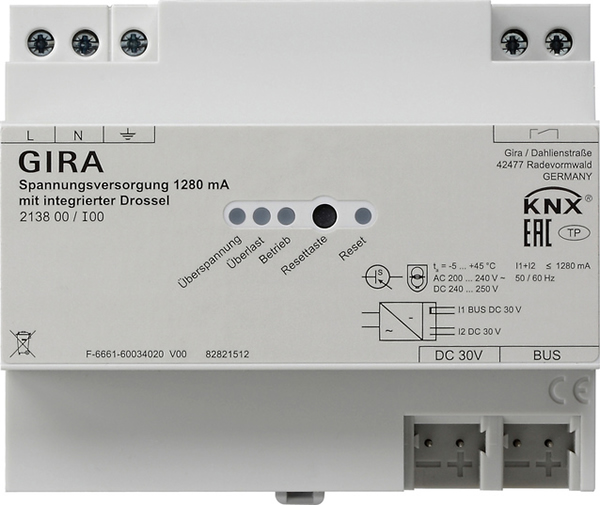
By Simon Buddle, Future Ready Homes.
Thursday night used to be quite a special TV night in the UK in the 1970s and 80s. Top of the Pops, the Old Grey Whistle Test and, of course, Tomorrow’s World. Many of you will have seen the 1989 Tomorrow’s World that was recently shared via social media, showing us what technology we might have in our homes today.

The fact that much of what was anticipated is now commonplace in a KNX home in the form of automated blinds, heating and reactive windows, is testament to how accurate those predictions were. The focus on reducing our fossil fuel consumption through better efficiency was particularly prescient – indeed a recently-finished job used the then-futuristic Aerogel to insulate a staircase on a four-storey external wall. The only exception is that whilst there are some inductive charging devices around, we’ve yet to see them embedded in the walls.
Powering KNX
The need for accessible power is also pertinent to KNX. The introduction of the KNX TP1-256 topology last year basically means that a total of 256 devices can be connected to a single line without the need for line repeaters. KNX TP1-256 has meant, for many, that we can largely forget about topologies, line couplers and power supplies – and I’d tend to agree when it comes to small systems – but there remains a good argument for creating separate lines on larger projects to protect the system against a single point of failure.
We are also seeing some new products come onto the market that don’t require a 230V supply to power them. This is great in terms of easier wiring in the control panel, but it does come with a trade-off in that the bus current draw is often higher as a result, since all the power to drive the devices’ circuits and relays comes from the bus rather than the 230V supply.

Bus power
Just look at this example in order to work out just how quickly you can run out of power on the bus. Let’s say we have a total of 15 rooms, each with a capacitive touchscreen keypad on the wall. These are rated at 20mA bus maximum consumption. Now add in, for each room, a radiator servo valve actuator also with a rated consumption of 20mA. With those 30 devices alone, we’ve instantly used up 600mA of our PSU, and that doesn’t take into account anything back of house in the control panels. Now, a good rule of thumb for specifying a PSU is to only ever drive it at 80% of its capacity. That means 512mA maximum for our 640mA PSU. I realise that typically they won’t all be drawing maximum power at the same time, but there will be times when they do; e.g. home/away routines could well activate all servos and displays.
Power supplies
KNX power supplies have been noted as almost indestructible by many of the old stalwarts of the industry. Whilst that may well be true, we shouldn’t rely on it as a design principle. If you under-specify the power supply, then put it in a cupboard where it will sit at maybe 50oC degrees 24/7 for the duration of its life, don’t be surprised if it comes back to haunt you!
The latest KNX TP1-256 power supplies can have two sitting side by side in parallel on the bus. That’s great, but it is still a single bus. If you need two power supplies, why not get a line coupler and split the system in half? This has the additional benefit of making the system more robust as you’ll only lose half the system if anything does go wrong. On the other hand, some manufacturers are now making a 1280mA PSU.

Bus diagnostics
There are power supplies such as those from MDT, that will output data such as bus voltage, current draw and overload via a telegram. That could be extremely useful in determining faults or just general diagnostics so that you can ensure that the bus is working within design parameters.

Uninterruptible power supplies and batteries
As the system grows, so should the concern for failures, and the best way to prevent these is to add in a battery to ensure the bus always remains healthy. There is a question as what equipment should continue to be powered in the event of a total power failure, and at design stage, it’s worthwhile exploring scenarios around this idea. If the power to the house fails, any safety and security devices should keep running, as should anything that has logic modules or large chunks of control running on them. But there’s no point keeping all of the modules controlling the lights and heating online. If the power failure is short-lived, they won’t matter.
Conclusion
So, we haven’t quite made it to the Tomorrows World of power being embedded in the walls everywhere. Perhaps it’s a timely reminder that as KNX systems become ever easier to design and install, we should still remember the basic principles of calculating bus load and being wary of loading too many devices onto a single line, even though we can.
A 640mA PSU doesn’t mean 64 devices, and likewise the 1280mA PSU should not mean 128 devices. There is better practice than calculating bus load in conjunction with the quantity of devices and then segmenting the system accordingly. That is a basic system design principle that will ensure tomorrow’s world runs as reliably as it does today.
Simon Buddle CEng MIET, is a consultant for Future Ready Homes, a specialist in BMS and ELV services system design.












